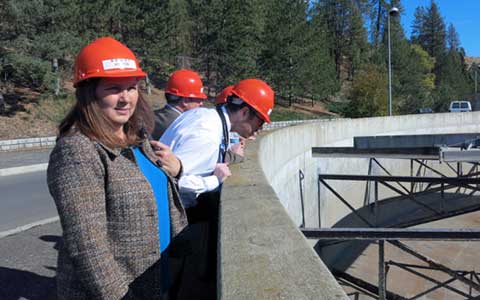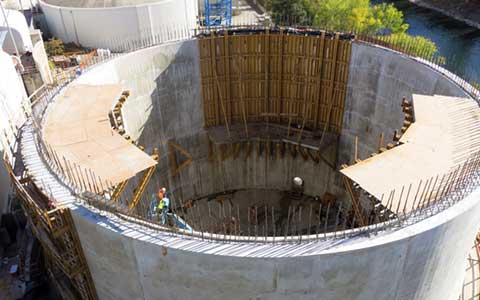
What’s Happening at the Water Reclamation Facility
Marlene Feist, Utilities Communications Manager, No Phone Number Available
Tuesday, October 13, 2015 at 10:11 a.m.

Members of the Spokane City Council donned hard hats and took a walk on beautiful October afternoon—through the Riverside Park Water Reclamation Facility.
The field trip provided an opportunity for Council Members to get an up close view of the improvements that are under way at the plant. As part of our Cleaner River Faster initiative, we will be investing about $150 million in the facility and vastly improving the quality of the water released to the Spokane River from the plant.
Overall, these upgrades will increase the removal of phosphorus from the effluent to more than 99 percent, up from 90 percent today. Phosphorus has been associated with low oxygen levels and algae blooms in Lake Spokane that can harm aquatic life. The plant also will remove greater amounts of heavy metals, PCBs, and other pollutants.
Additionally, they will increase the capacity of the plant, allowing for improved ability to treat wastewater during rain storms as well as periods of rapid snow melt and high river flows.
On their tour, the Council Members viewed the construction of a new solids digester, which has been under way for about a year. Digesters use a microbial process to break down the solids, oils, and suspended particles that are removed from the wastewater at various points at the plant. Final, processed solids are de-watered and spread on fields as fertilizer. About 6,500 tons of these biosolids are generated annually.
They also viewed a pilot project of two membrane technology systems that will be the heart of an additional level of treatment at the facility. They also saw the site where that project - commonly called the Next Level of Treatment—will ultimately be built.
Work at the Water Reclamation Facility is part of the City's efforts to improve the health of the Spokane River. In addition to the upgrades at the treatment plant, the City's Integrated Clean Water Plan details work to reduce overflows from combined sanitary and stormwater sewers and reduce the amount of stormwater reaching the river from separated storm sewers.
More About...
- Cleaner River Faster
- Digester
- Live
- Membranes
- Next Level of Treatment
- NLT
- Riverside Park Water Reclamation Facility
- Spokane City Council
- Wastewater



